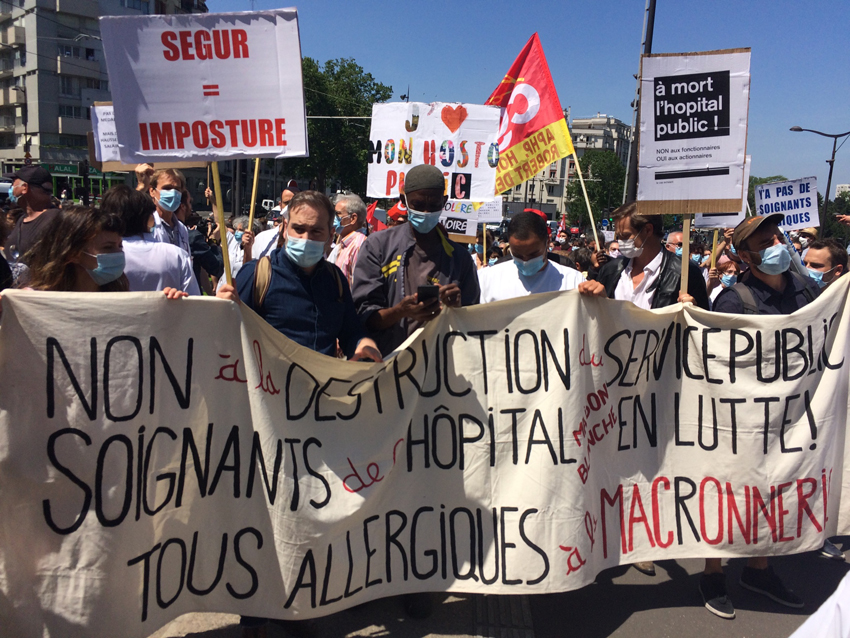THE WORLD Health Organisation (WHO) is urging healthcare leaders and governments to address all persistent threats to both the health and safety of all workers and patients.
‘The Covid-19 pandemic has reminded all of us of the vital role health workers play to relieve suffering and save lives,’ were the words of Dr Tedros Adhanom Ghebreyesus, the WHO Director-General.
‘No country, hospital or clinic can keep its patients safe unless it keeps its health workers safe. WHO’s Health Worker Safety Charter is a step towards ensuring that health workers have the safe working conditions, the training, the pay and the respect they deserve.
‘The pandemic has also highlighted the extent to which protecting health workers is key to ensuring a functioning health system and a functioning society.’
The Charter, released today for World Patient Safety Day, calls on governments and those running health services at local levels to take five actions to better protect health workers. These include steps to protect health workers from violence; to improve their mental health; to protect them from physical and biological hazards; to advance national programmes for health worker safety; and to connect health worker safety policies to existing patient safety policies.
Mounting reports of infections, illness and attacks among health workers fighting Covid-19
Covid-19 has exposed health workers and their families to unprecedented levels of risk. Although not representative, data from many countries across WHO regions indicate that Covid-19 infections among health workers are far greater than those in the general population.
While health workers represent less than 3% of the population in the large majority of countries and less than 2% in almost all low-and-middle-income countries, around 14% of Covid-19 cases reported to WHO are among health workers.
In some countries, the proportion can be as high as 35%. However, data availability and quality are limited, and it is not possible to establish whether health workers were infected in the workplace or in community settings. Thousands of health workers infected with Covid-19 have lost their lives worldwide.
In addition to physical risks, the pandemic has placed extraordinary levels of psychological stress on health workers exposed to high-demand settings for long hours, living in constant fear of disease exposure while separated from family and facing social stigmatisation.
Before Covid-19 hit, medical professionals were already at higher risk of suicide in all parts of the world. A recent review of health care professionals found one in four reported depression and anxiety, and one in three suffered insomnia during Covid-19.
WHO recently highlighted an alarming rise in reports of verbal harassment, discrimination and physical violence among health workers in the wake of Covid-19.
Five steps to improve health worker safety and patient safety
On World Patient Safety Day, WHO reminds governments that they have a legal and moral responsibility to ensure the health, safety and wellbeing of health workers.
The Organisation’s health worker charter calls on all Member States and relevant stakeholders to take steps to:
1. Establish synergies between health worker safety and patient safety policies and strategies
- Develop linkages between occupational health and safety, patient safety, quality improvement, and infection prevention and control programmes.
- Include health and safety skills in personal and patient safety into education and training programmes for health workers at all levels.
- Incorporate requirements for health worker and patient safety in health care licensing and accreditation standards.
- Integrate staff safety and patient safety incident reporting and learning systems.
- Develop integrated metrics of patient safety, health worker safety and quality of care indicators, and integrate with health information system.
Develop and implement national programmes for occupational health and safety of health workers
- Develop and implement national programmes for occupational health for health workers in line with national occupational health and safety policies.
- Review and upgrade, where necessary, national regulations and laws for occupational health and safety to ensure that all health workers have regulatory protection of their health and safety at work.
- Appoint responsible officers with authority for occupational health and safety for health workers at both the national and facility levels.
- Develop standards, guidelines, and codes of practice on occupational health and safety.
- Strengthen intersectoral collaboration on health worker and patient safety, with appropriate worker and management representation, including gender, diversity and all occupational groups.
Protect health workers from violence in the workplace
- Adopt and implement in accordance with national law, relevant policies and mechanisms to prevent and eliminate violence in the health sector.
- Promote a culture of zero tolerance to violence against health workers.
- Review labour laws and other legislation, and where appropriate the introduction of specific legislation, to prevent violence against health workers.
- Ensure that policies and regulations are implemented effectively to prevent violence and protect health workers.
- Establish relevant implementation mechanisms, such as ombudspersons and helplines to enable free and confidential reporting and support for any health worker facing violence.
Improve mental health and psychological well-being
- Establish policies to ensure appropriate and fair duration of deployments, working hours, rest break and minimising the administrative burden on health workers.
- Define and maintain appropriate safe staffing levels within health care facilities.
- Provide indemnity and insurance coverage for work-related risk, especially those working in high-risk areas.
- Establish a ‘blame-free’ and just working culture through open communication, including legal and administrative protection from punitive action on reporting adverse safety events.
• Provide access to mental well-being and social support services for health workers, including advice on work-life balance and risk assessment and mitigation.
